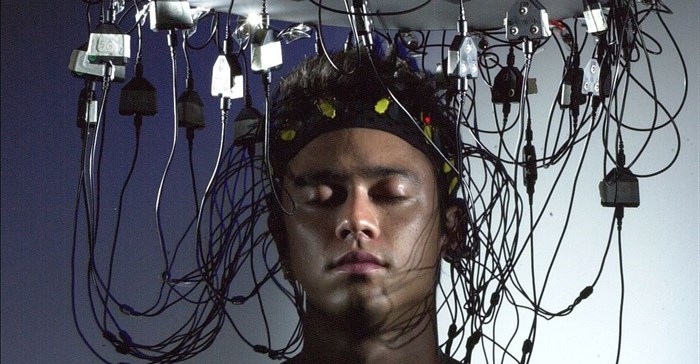New wave in tech: hacking the brain

A number of the innovations were on display at the Consumer Electronics Show in Las Vegas, where computer scientists and biomedical experts showcased ways to tap into and use brain signals.
Mind over matter
The "mind control" headband unveiled by startup BrainCo effectively hacks into brain signals with a range of possible applications -- from helping to improve attention spans to detecting disease, controlling smart home appliances or even a prosthetic device. The device "translates your brainwaves into electronic signals," said the Boston-based firm's Zenchuan Lei.
At CES, BrainCo demonstrated how a person could use the headband to manipulate a prosthetic hand - a potential life-changer for those paralysed or missing limbs. "These signals can be used to control objects like a prosthetic hand," Lei said. "You can turn the lights on or off just by focusing on that."
The device designed by scientists from Harvard and the Massachusetts Institute of Technology employs "neuro feedback," a means of allowing people to control their brain waves for various purposes. It is expected to be sold later this year for less than $150. Lei suggested the device could also help people with attention deficit hyperactivity disorder because "it teaches you to enhance your focus and concentration."
Capturing brainwaves
A similar project on display from New York-based OpenBCI (which stands for open-source brain-computer interface) seeks to create a platform for applications of the technology in health care, education or other fields. OpenBCI uses a 3D-printed helmet which captures brainwaves from various sectors of the brain.
"This can be used to help people with ALS (amyotrophic lateral sclerosis or Lou Gehrig's disease) or quadriplegics communicate," said OpenBCI chief executive Conor Russomanno.
The technology also offers a potential for so-called "neuro-marketing" which tests new products and services on the basis of sensory and cognitive response.
Insights into the mind
South Korean startup Looxid Labs unveiled a headset that tracks both brainwaves and eye movements, claiming this provides more accurate insights into the mind. "No other device that I'm aware of combines these things," said Looxid chief business officer Alex Chang.
With the headset attached to a computer, "you can roll your eyes to scroll the mouse, and click on a button by blinking," Chang said.
The headset is being launched in July as a developer kit, with scope to build applications for controlling physical or virtual objects, communicating, analysing a user's mood or mental health, or verifying their identity. "We also see this as having potential in gaming because you can control things with your eye," Chang said. "When you concentrate you can stop the bullets."
He added that for neuro-marketing applications, "we can show someone an ad and we can see where the eyes are focused. We can scan emotions and understand how someone is responding."
Alternative to medication
Other exhibitors at CES demonstrated wearable devices that block pain signals to the brain, as an alternative to medications with side effects for people who suffer from debilitating pain.
The neuro-feedback technique is being applied as a meditation aid by Canadian-based Interaxon and its Muse headband. Muse uses sensors on the forehead and behind the ears to measure brain signals, and advise users how to improve their meditation technique. The coaching app helps people achieve a level of consistency in their meditation efforts.
"It's like going to the gym. The muscle doesn't get stronger unless you do it over and over again. It's the same with your brain," said Muse marketing manager Tracy Newsom-Rosenthal at the CES show.
Feel good neurotransmitters
One startup at CES was showcasing a technique to deliver pleasure signals to the brain via music, by triggering the release of neurotransmitters such as dopamine, serotonin and oxytocin. The hand-held device from Florida-based Nervana allows users to plug in a music player into the $299 device and get the pleasurable signals delivered by its headphones.
"We send a signal into the vagus nerve which produces dopamine, and that relaxes you," CEO Ami Brannon told AFP on the show floor. "Some people describe the sensation as euphoric."
But Brannon said the technique "is not really hacking the brain." "We access the central nervous system and it just tickles the nerve to remind the brain to release dopamine," she said. "People who practice yoga or meditation can already do this."
Source: AFP
Source: I-Net Bridge

For more than two decades, I-Net Bridge has been one of South Africa’s preferred electronic providers of innovative solutions, data of the highest calibre, reliable platforms and excellent supporting systems. Our products include workstations, web applications and data feeds packaged with in-depth news and powerful analytical tools empowering clients to make meaningful decisions.
We pride ourselves on our wide variety of in-house skills, encompassing multiple platforms and applications. These skills enable us to not only function as a first class facility, but also design, implement and support all our client needs at a level that confirms I-Net Bridge a leader in its field.
Go to: http://www.inet.co.za



